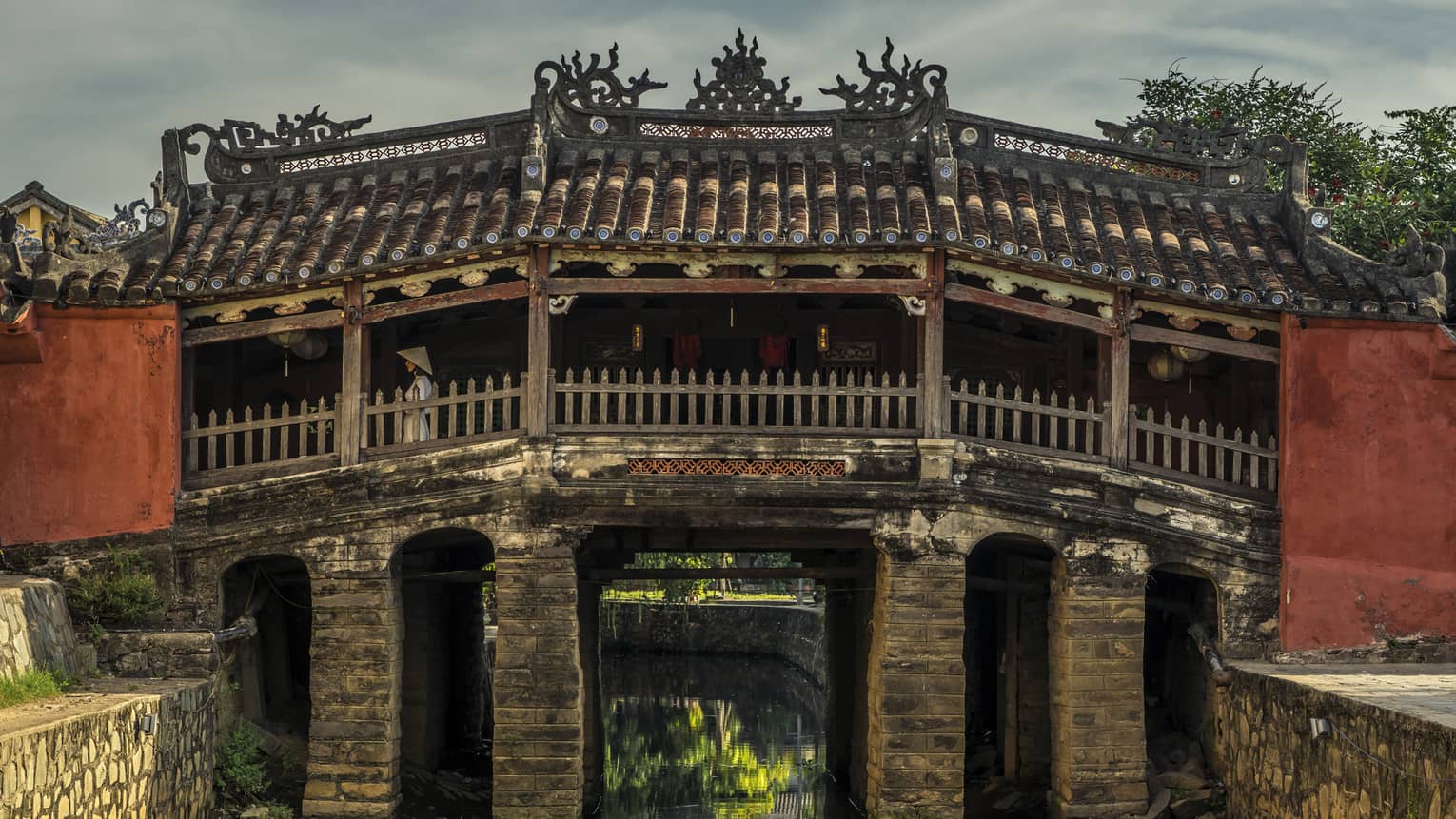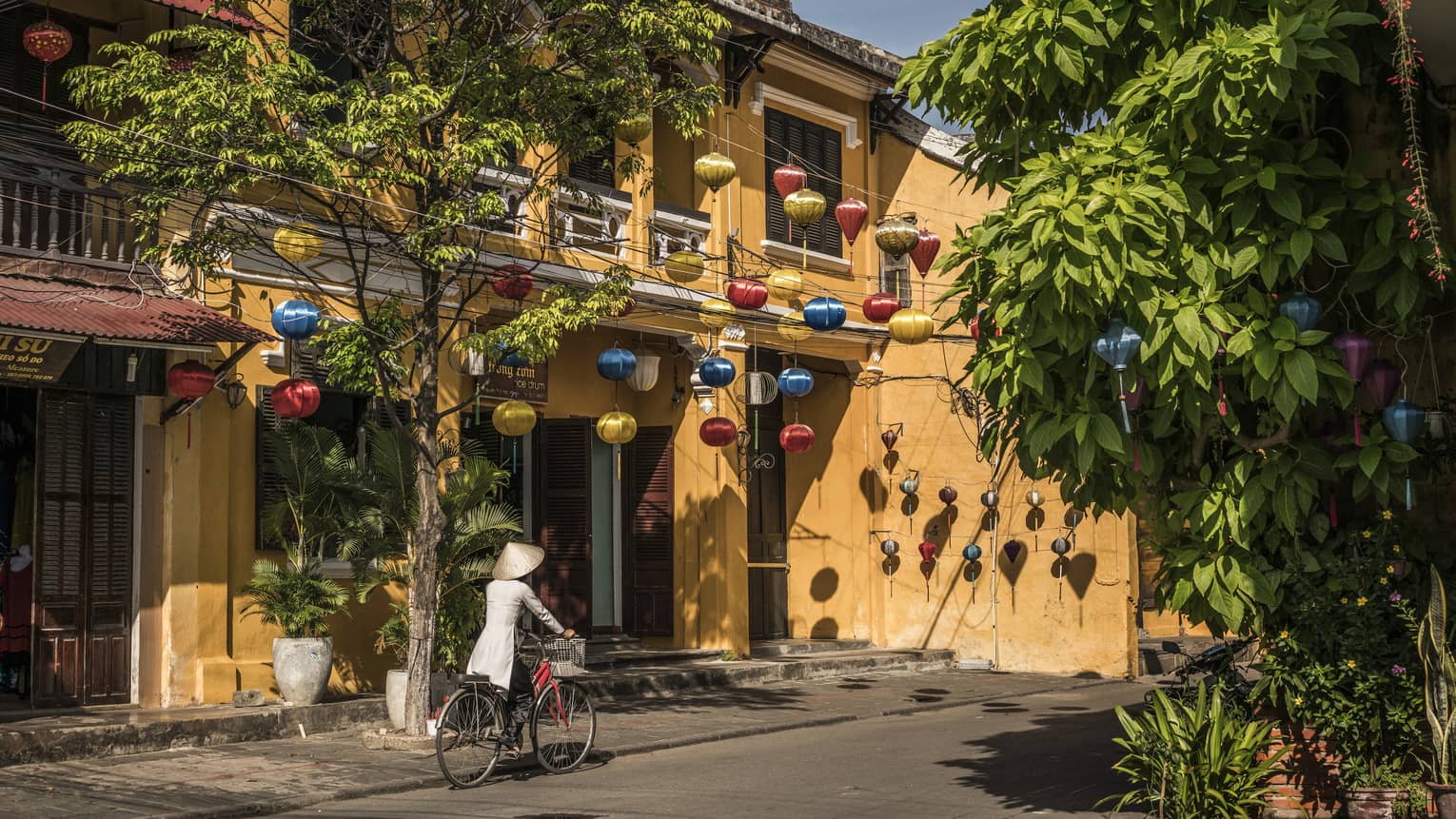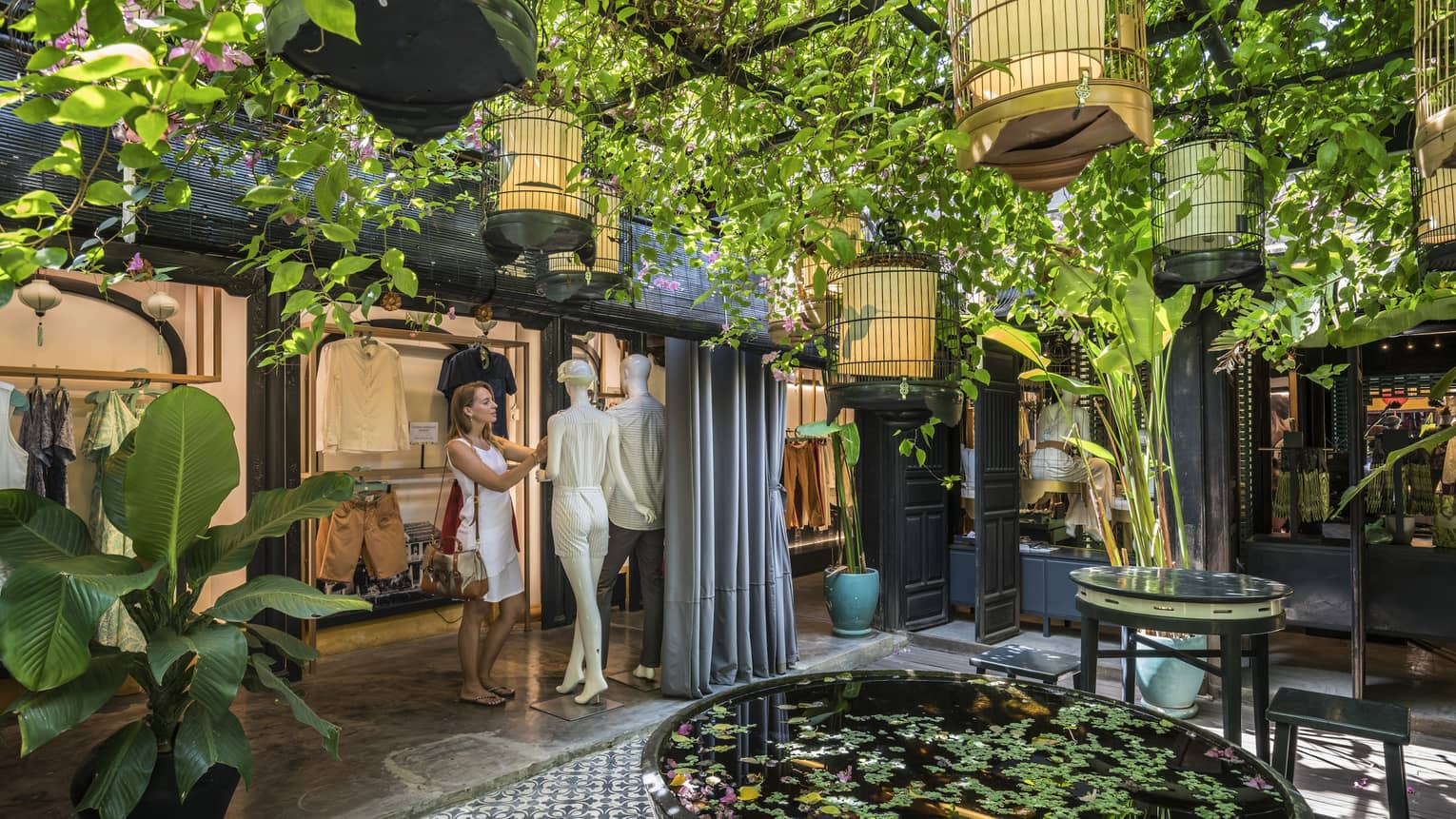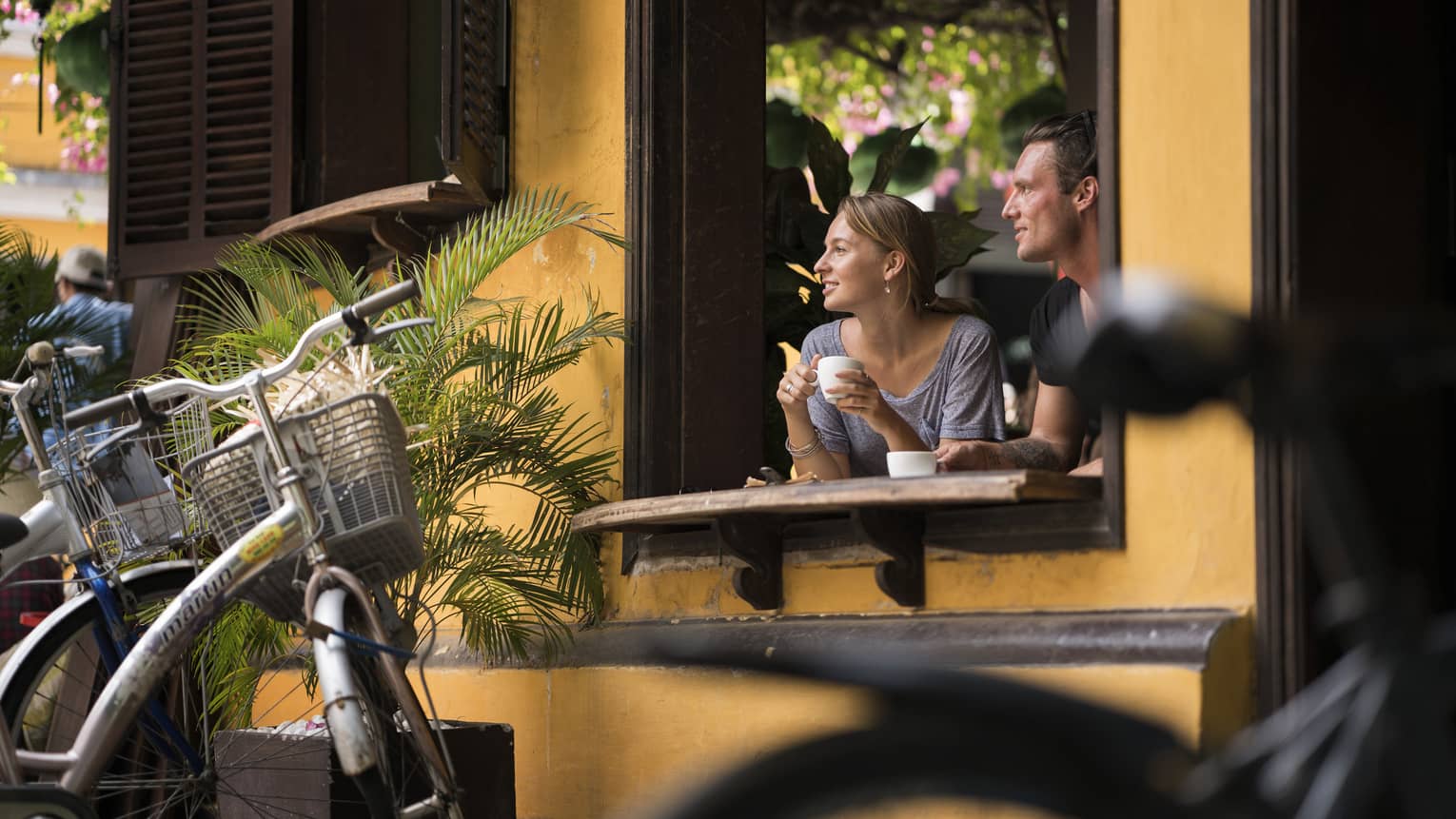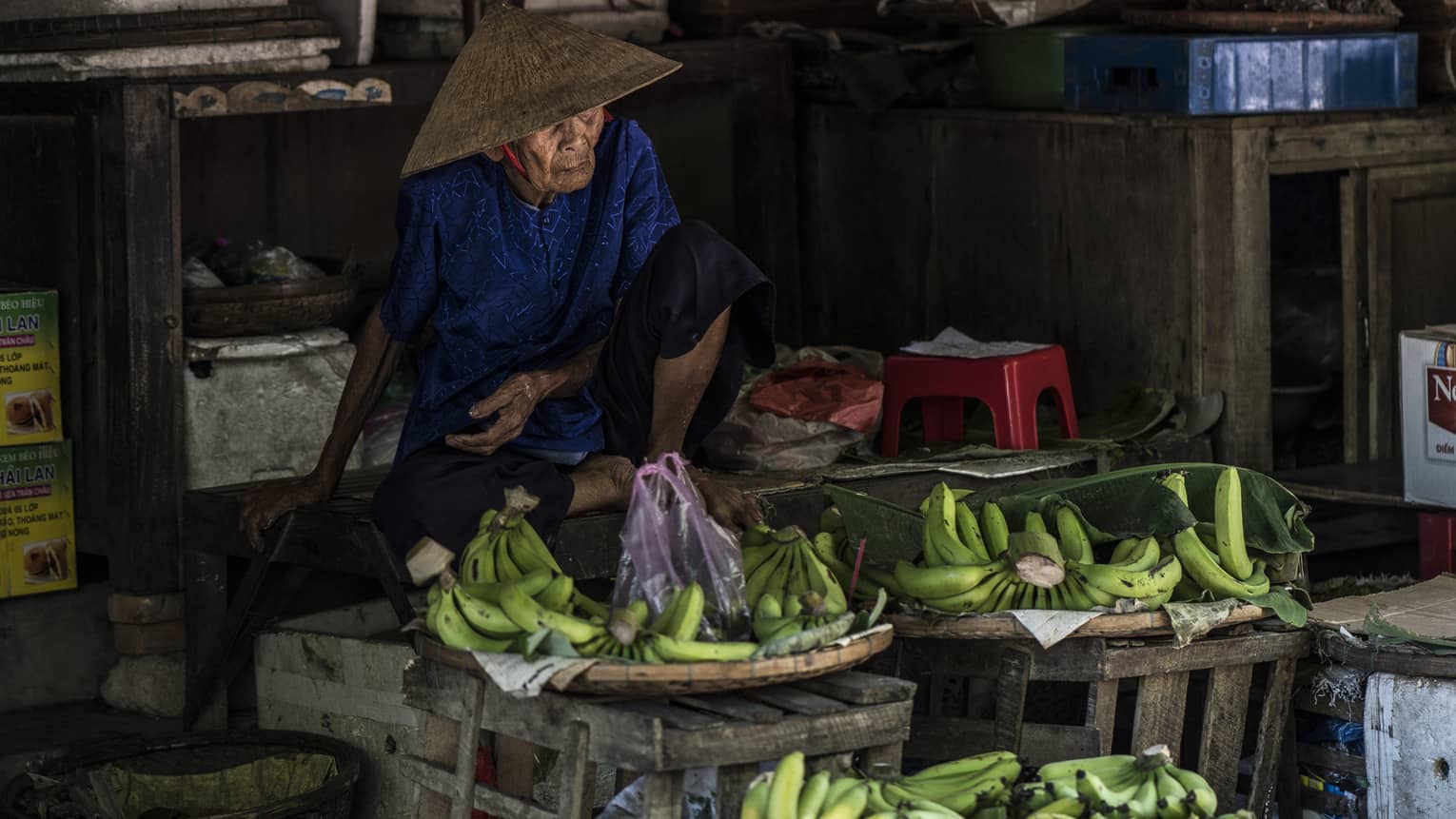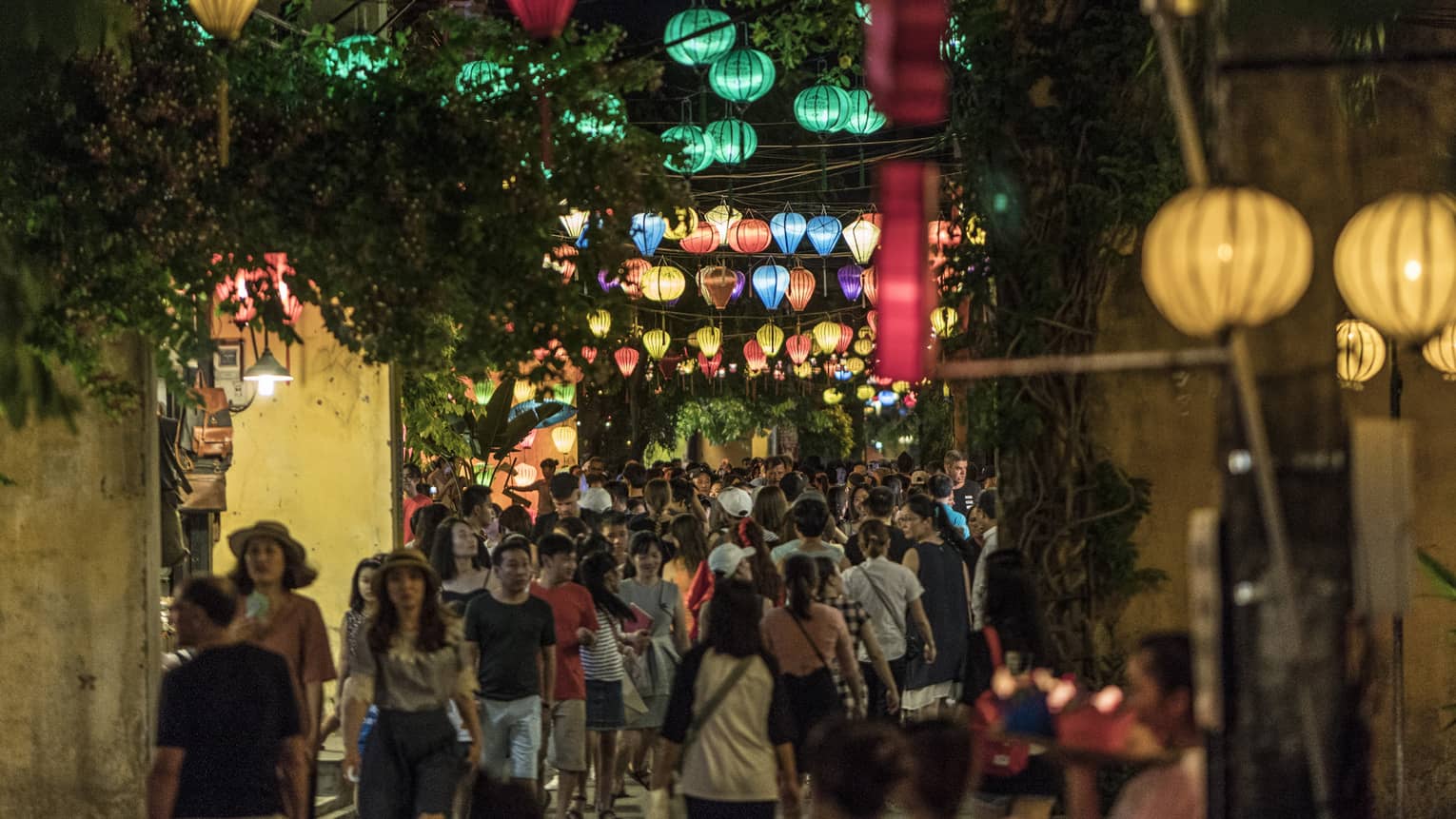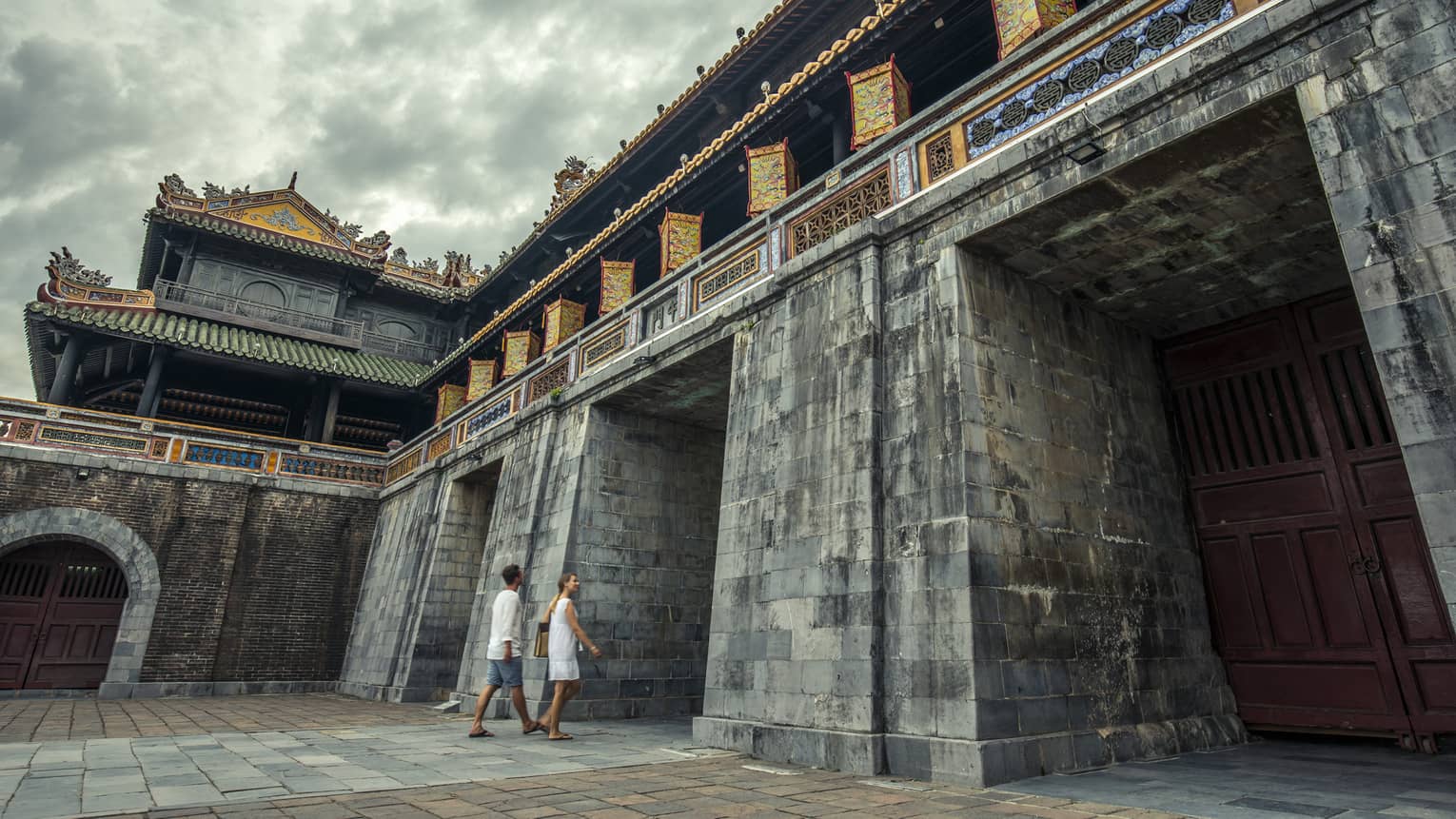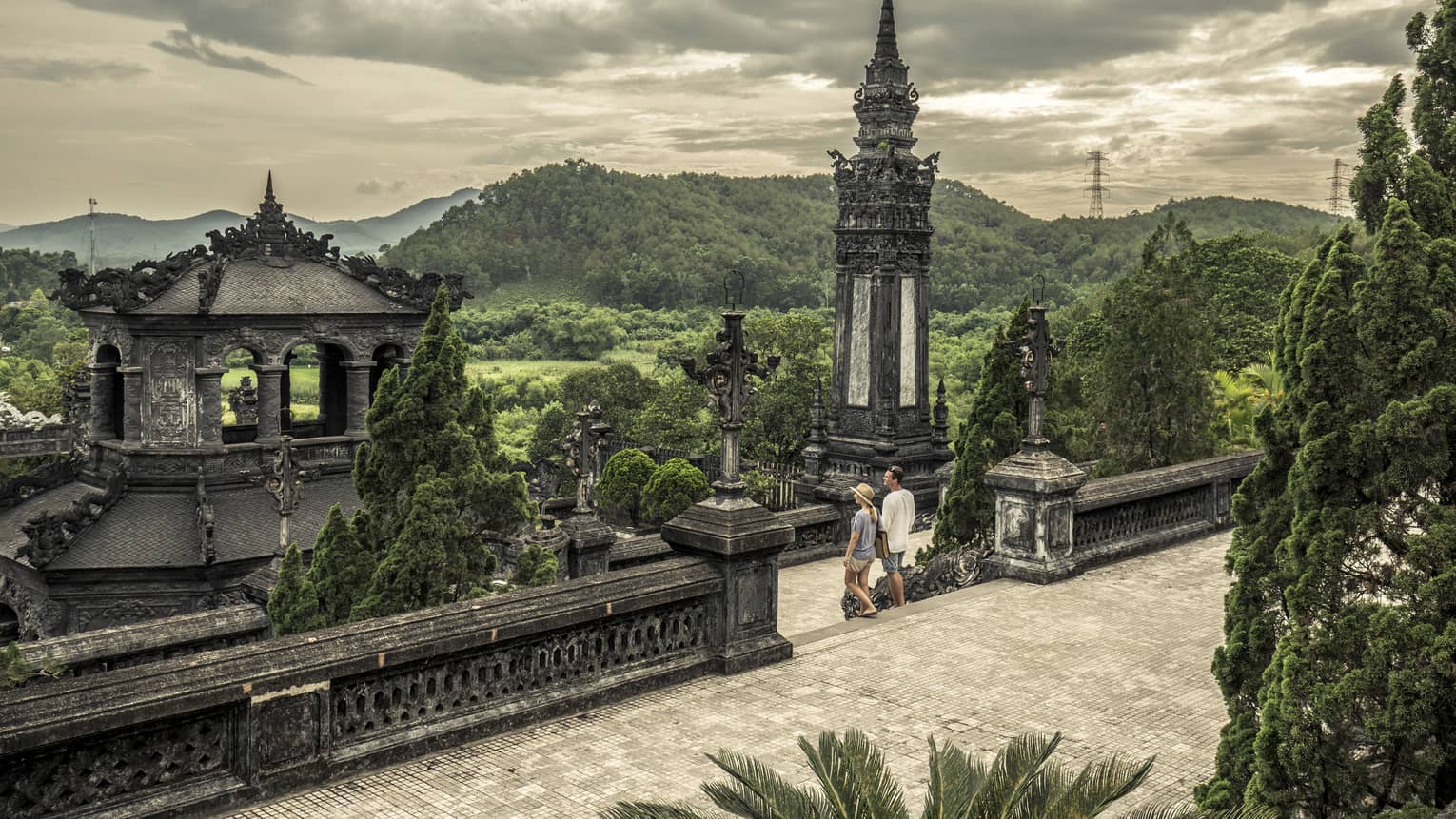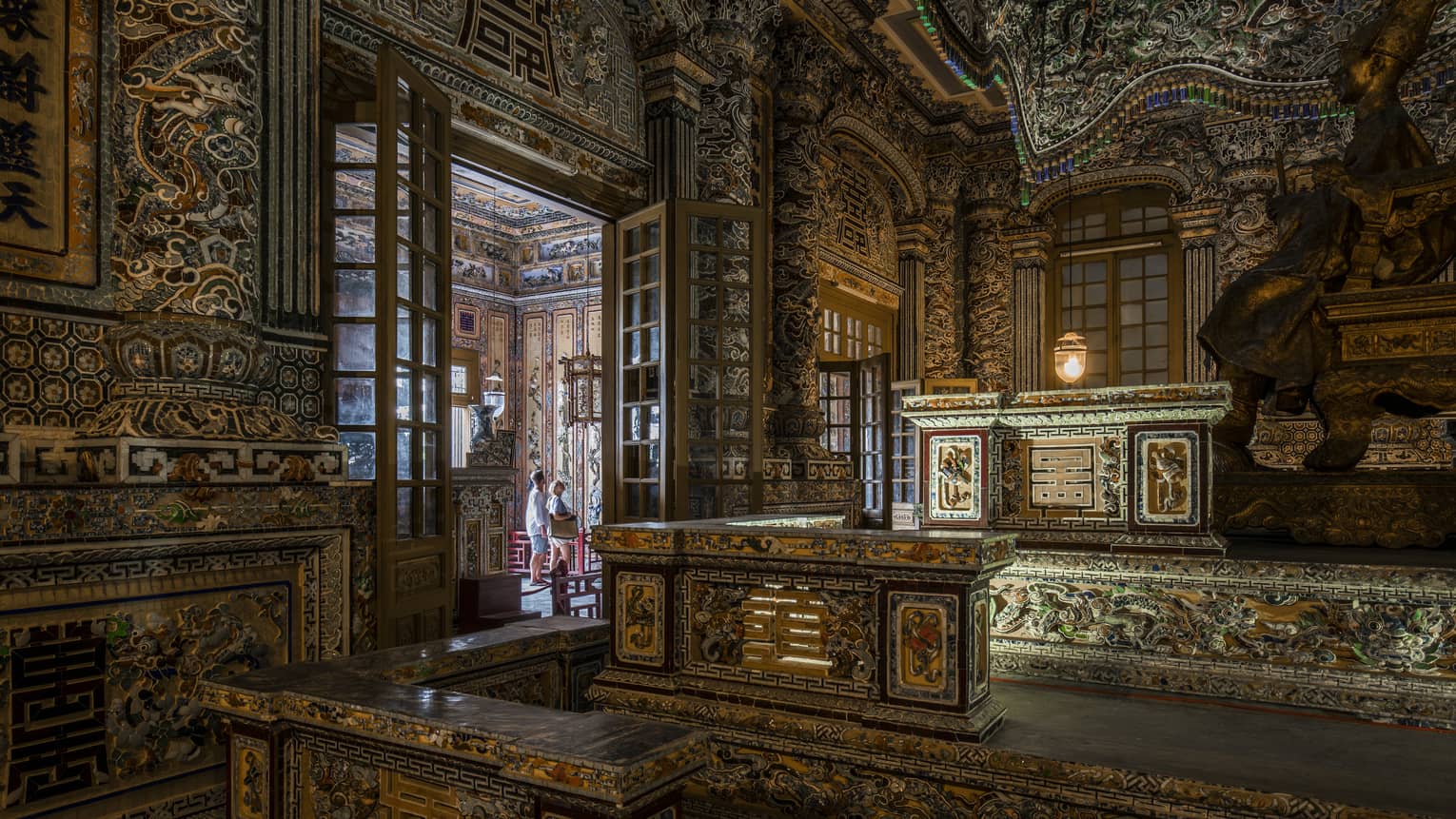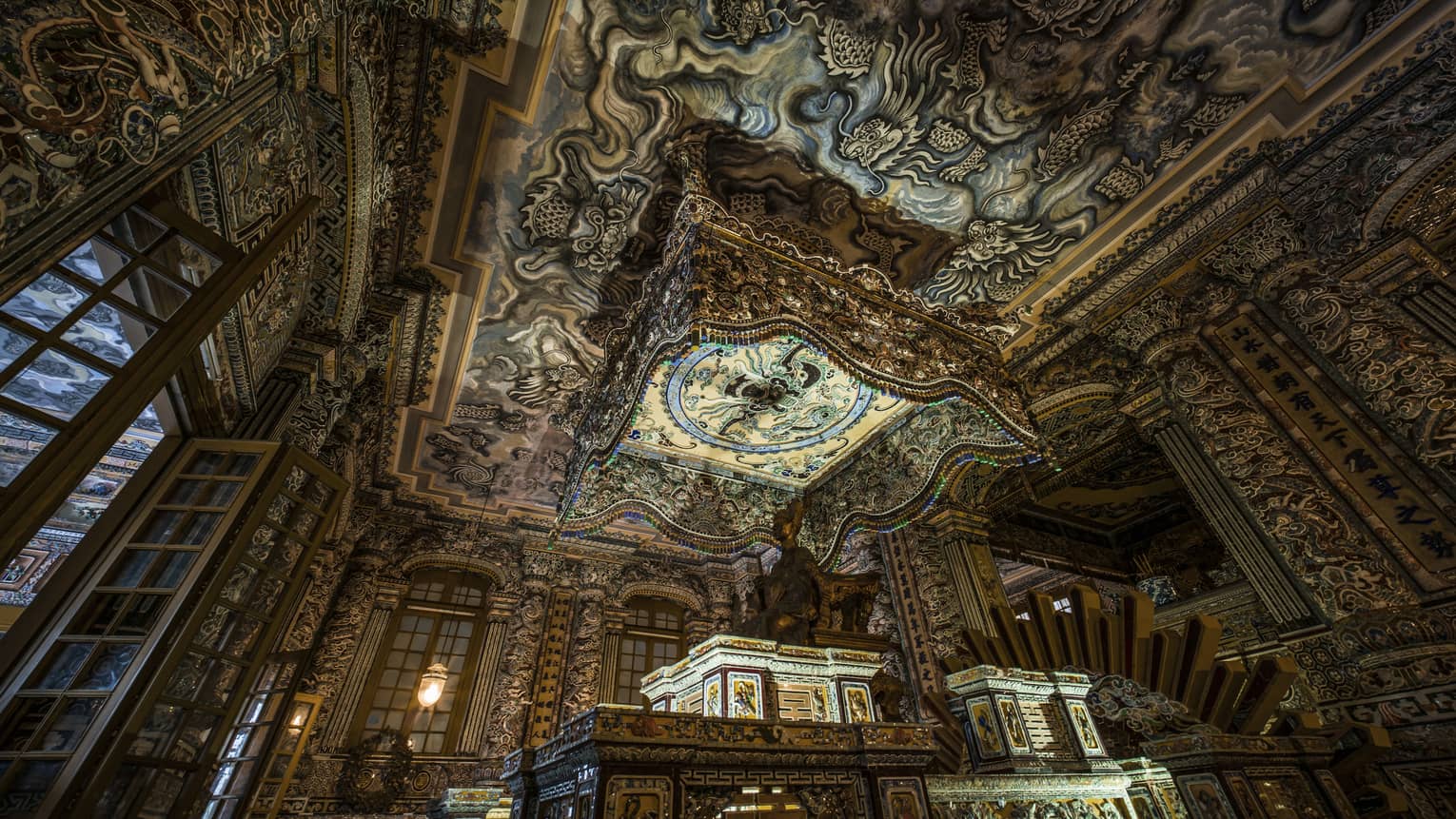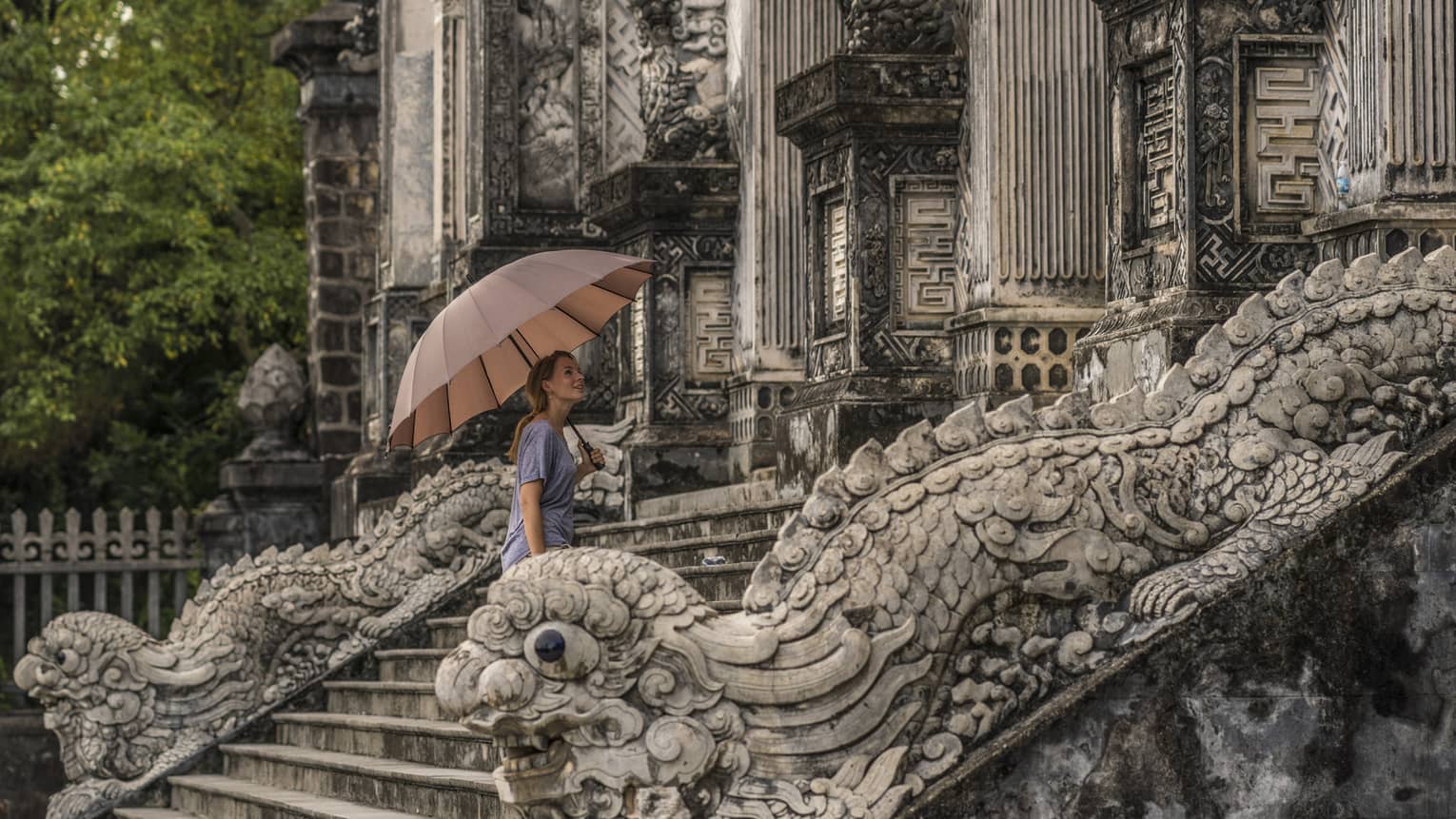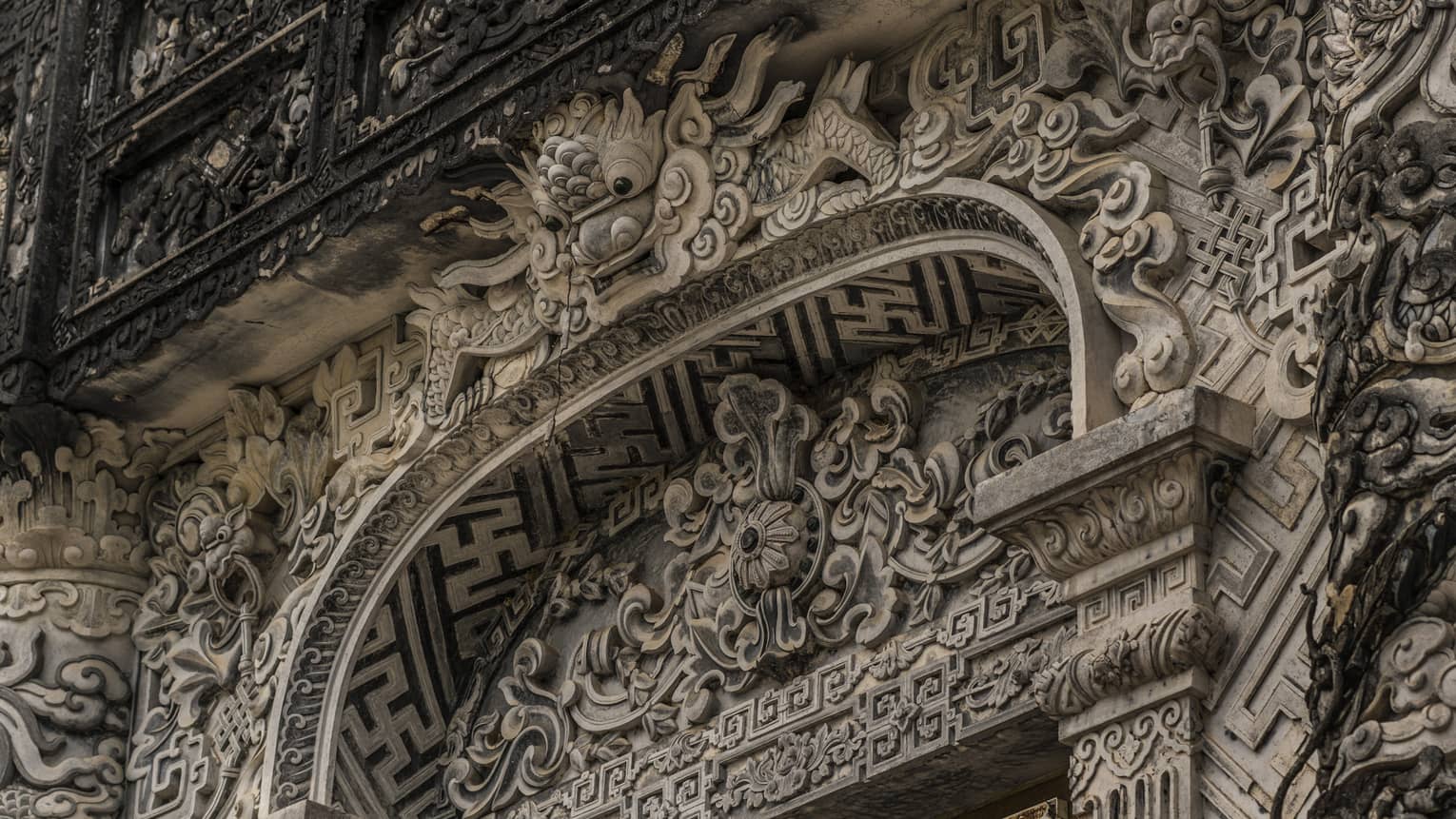Wander the lantern-lit streets and artisan ateliers of enchanting Hoi An, marvel at the temple-strewn sanctuary of My Son and stand in awe of The Imperial City of Hue’s Citadel – a towering pagoda and 50-building tomb complex.
Explore Hoi An's Beguiling Lantern-Lit Streets
- Discover Hoi An with a Behind-The-Scenes Pass to Ancient City Secrets
- Rich in atmosphere and listed as a UNESCO World Heritage site in 1999, the ancient seaport of Hoi An weaves history and intrigue through each of its lantern-strewn streets and riverside alleyways. Named the World’s Best City 2019 by Travel + Leisure, Hoi An is home to more than 300 tailors who still ply their wares, crafting bespoke items beneath strings of coloured lights. Venture out to the Central Market with our expert Concierge, who will guide you through the crowds for a sensory exploration of scenes consistent for centuries – from the call of the vendors to the pungent fragrance of Vietnamese herbs. Stop to appreciate the assembly hall of Phuoc Kien, built in 1692 by Chinese merchants to house the sea goddess Thien Hau; discover historical secrets in the Hoi An Folklore Museum; then learn the stories of the pagoda-covered Japanese Bridge, one of Hoi An’s most photographed landmarks. Complete your half-day insider adventure with a visit back-in-time to Phung Hung Old House – a treasure-trove of exquisite lanterns, wall hangings and embroidery – before being escorted back to the vast private beach and gardens of The Nam Hai.
Explore Ancient Ruins In A Lush Mountain Valley
- Marvel at the Mystical Ruins of the Ancient Champa Kingdom
- My Son Sanctuary is a historical wonder of Southeast Asia and one of the region’s foremost Hindu temple complexes. Comparable to Angkor Wat in Cambodia or Ayutthaya in Thailand in its importance, this UNESCO World Heritage Site features 71 monuments spread across an elevated valley flanked by three sacred mountains and the holy river, Thu Bon. My Son was an ancient place of religious worship and the burial site of Champa kings. Its ruins and reconstructed temples span from the 4th to 13th centuries and comprise fired clay brick towers with stone pillars, decorated with sculptures and sandstone bas-reliefs depicting scenes from Hindu mythology. Your tour takes you deep into the lush valley to marvel at ancient carvings of battle scenes and the unfathomable feats of Cham engineering. Visit early in the morning before the crowds for a meditative experience among the lush jungle surrounds before returning to the gardens of The Nam Hai with your new-found knowledge.
Journey To The Heart Of Vietnam’s Last Empire
- Within the Triple-Walled Wonder of Majestic Hue
- Located on the bank of the Perfume River, the Imperial City of Hue was once a sprawling complex of temples, palaces, offices, residences and gardens that befitted its role as Vietnam’s political, cultural and religious centre. Through sensitive restoration, the city’s remains still exist as a powerful legacy to the might and majesty of the Nguyen Dynasty. Immerse yourself into the recesses of Vietnamese history along the Hai Van Pass: a spur of the Annamite Range that emerges from the west and juts into the ocean, affording spectacular views. Once at Hue, you will be escorted inside the palace fortress – The Citadel. Within The Citadel lies The Imperial City, surrounded by a second immense wall, beyond which lies the Forbidden Purple City: a city within a city within a city where the Emperor and his confidants resided. From the triple-walled majesty of the inner city, continue by car to the octagonal Thien Mu Pagoda, a seven-storey 21-metre-high marvel, or opt for the scenic route via boat along the Perfume River (additional charge). After a lunch stop at La Residence or Y Thao Garden Restaurant, contemplate the magnitude of Hue’s tomb complexes, including Tu Duc, where 50 buildings lie within 12 hectares of gardens, courtyards and lakes.



